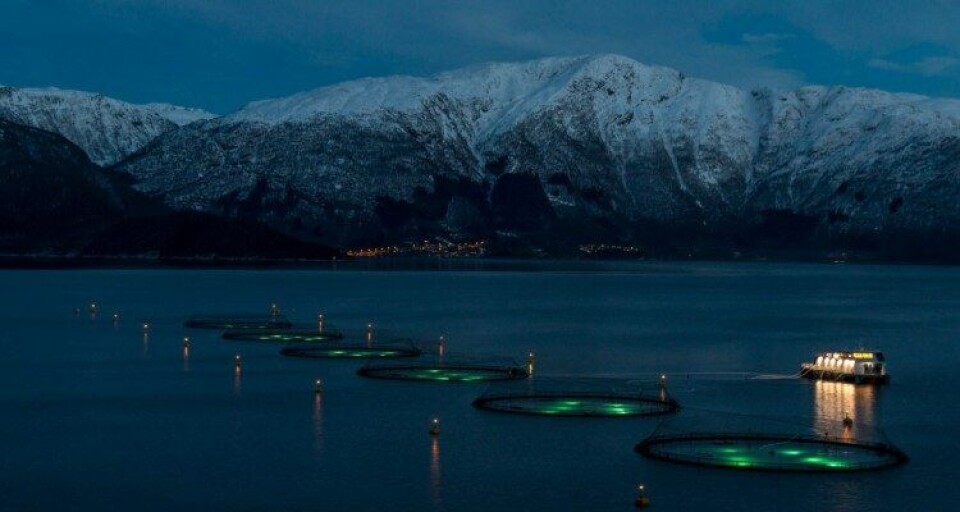
Lights help combat lice
The use of LED lights in salmon cages can improve both the growth rate of the fish and their FCR, as well as helping to reduce lice levels and prevent maturation.
This claim, made by light manufacturer Philips, has been supported by the deployment their LEDs on a commercial salmon site run by Lingalaks, a Norwegian producer, over the last few months.
The Hardanger-based aquaculture company adopted Philips’s specially developed LED systems for aquaculture in March. Six months later, Kasper Loberg Tangen, operations manager at Lingalaks, told kyst.no that the project has met with good results.
“LED lights have worked very well. They are highly reliable and prevent maturation to at least the same extent as traditional lights,” he points out.
“Analyses show that they provide both c.10% faster growth rate (SGR) and approximately 10% better FCR. In winter the growth rate has improved by significantly over 10%, but during the summer we see a certain compensation growth of fish which have had traditional lighting,” he adds..
According to Tangen, immersing the lights to depths of up to 8m helps to encourage the salmon to remain deeper in the cages, where there are fewer lice, and he reports a 40-57% reduction in lice numbers on fish in cages that use LEDs compared to cages using with halogen lights or no lights.
Given the company produces 10-12,000 tonnes of salmon a year, if the LEDs allow them to remove the need for only one chemical treatment they could save millions of NOK a year.
Light relief
Philips started to investigate the effects of light on salmon in 2012. Its first commercial lights for the aquaculture industry were launched in 2013, and there are now 14 companies in Norway that use them, as well as operations in Tasmania, Chile, Scotland, Canada and the Faroe Islands.
Ole Fretheim, business development manager at Philips, says: “Studies show that lights are very effective in postponing sexual maturity, but also salmon grow significantly better through the winter with this type of lighting compared to other LEDs and halogen lighting. FCR is also lower. Several experiments have shown the lights can lower the rates of louse infestation compared to cages with other types of, or no, lights.”
Louse control
Lingalaks uses a variety of techniques to combat lice, setting a threshold of 0.2 mature females per fish.
These include the use of wrasse, lumpfish and a Thermolicer. The company has also started with underwater feeding trials, the results of which should be available in the coming months, according to Tangen.






















































